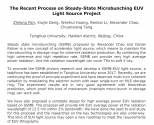oFilm is in charge of camera modules on phones
Recently disclosed to the outside world that floating macro modules, periscope telephoto macro modules, chip anti-shake, variable aperture and telescopic modules have all achieved mass production.
Looks like the domestic phone camera module supply chain is almost complete
looking at oFilm here
16.8B in revenue
12.2B in phone
1.9B in EVs
2.4B in new areas
so for camera module companies, vast majority of their revenue comes from phones
Recently disclosed to the outside world that floating macro modules, periscope telephoto macro modules, chip anti-shake, variable aperture and telescopic modules have all achieved mass production.
Looks like the domestic phone camera module supply chain is almost complete
looking at oFilm here
16.8B in revenue
12.2B in phone
1.9B in EVs
2.4B in new areas
so for camera module companies, vast majority of their revenue comes from phones
Last edited:


